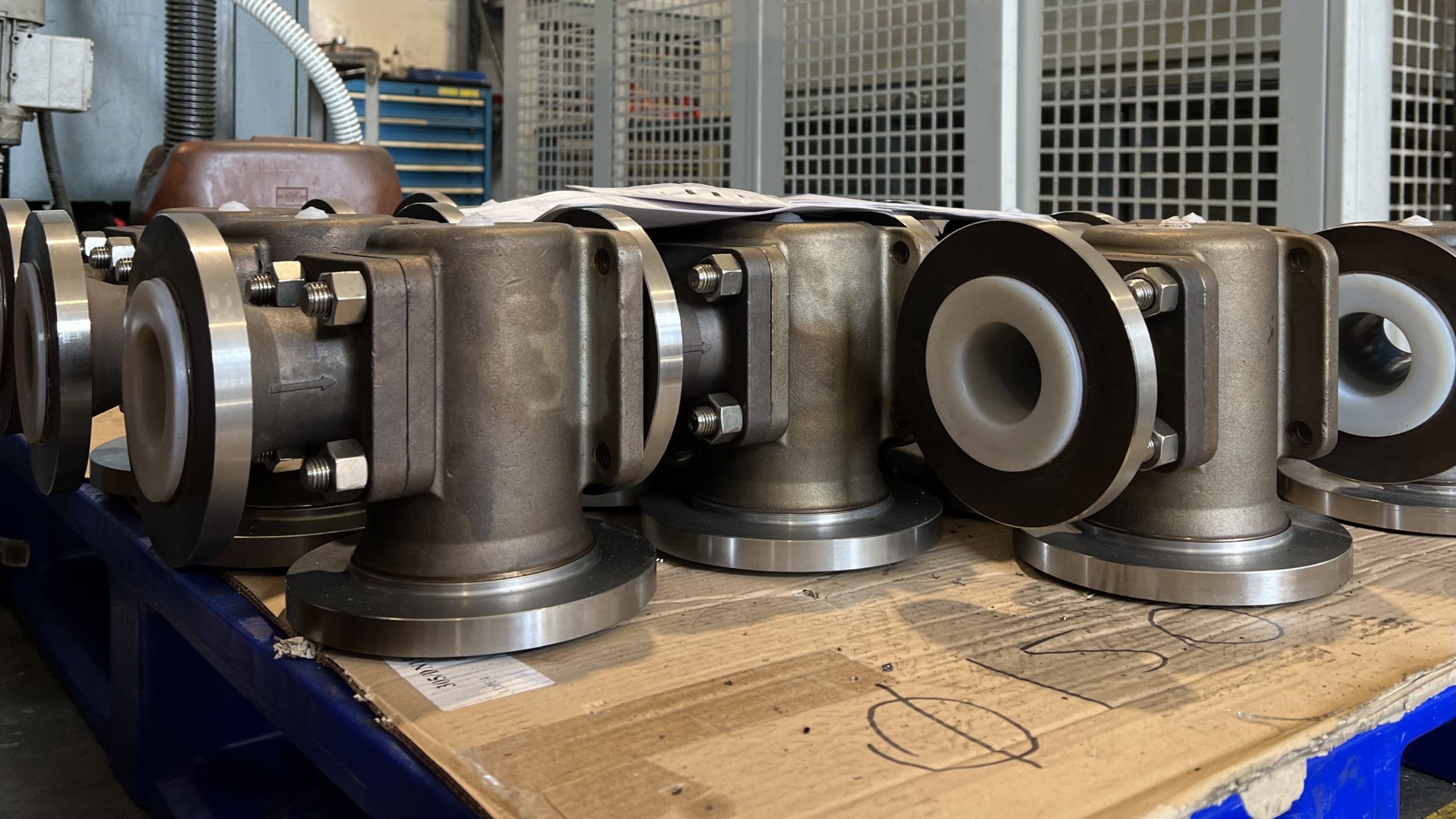In an industrial context, perfluoroalkoxy (PFA) is a key solution for enhancing the chemical resistance, thermal stability, and non-stick properties of materials. The terms “PFA lining” and “PFA coated” describe two distinct application methods, each with specific advantages.
271 series
PFA Lining
1. Definition: Involves applying a thick layer of PFA inside containers, pipes, or valves, bonded to the substrate through mechanical or adhesive processes.
2. Thickness: The layer is thicker than coating, providing a more robust barrier against chemical corrosion.
3. Durability: Thanks to its thickness, it is extremely durable, suitable for aggressive environments and mechanical stress.
4. Applications: Used in industries requiring high purity and extreme chemical resistance, such as chemical, pharmaceutical, and semiconductor industries.
240 series
PFA Coated
1. Definition: Involves applying a thin layer of PFA through techniques like spraying or dipping.
2. Thickness: The layer is lighter and thinner compared to PFA lining, providing less invasive protection.
3. Flexibility: Ideal for applications where lightness and flexibility are required, while still offering chemical and thermal resistance.
4. Applications: Often used in electronics and in the production of non-stick surfaces, such as in electronic components and kitchenware.
Summary of Differences
– Thickness: PFA lining is thicker and more robust, while PFA coated is thinner.
– Durability: PFA lining is more durable, suited for harsh industrial environments.
– Application Method: PFA lining involves applying a thick layer, PFA coated a thinner one.
– Uses: PFA lining is ideal for heavy-duty industrial applications, PFA coated for lighter applications requiring non-stick properties.
PFA Safety Valves
Safety valves are crucial components in many industries to prevent accidents related to overpressure in systems. The use of PFA lining or coating in safety valves is particularly effective when operating in highly corrosive environments or at high temperatures, typical in chemical and petrochemical industries. Thanks to its chemical resistance and durability, PFA lining (271 series) extends the operational life of valves, reducing the need for maintenance and replacement. On the other hand, PFA coated (240 series) may be preferable for valves in less aggressive applications, where reduced weight and flexibility are key factors. Choosing the right type of coating contributes to improving operational safety and reducing overall management costs.
Conclusion
Both PFA lining and PFA coated are essential for enhancing the performance and longevity of industrial safety valves. The choice between the two depends on specific operating conditions and performance needs. In extreme conditions, where valves are exposed to aggressive chemicals and high temperatures, 271 series is the best solution. However, when lightness and flexibility are required, 240 series offers the appropriate protection. For Besa, strategic use of these materials can significantly improve operational efficiency and safety, providing a competitive advantage in critical sectors.









